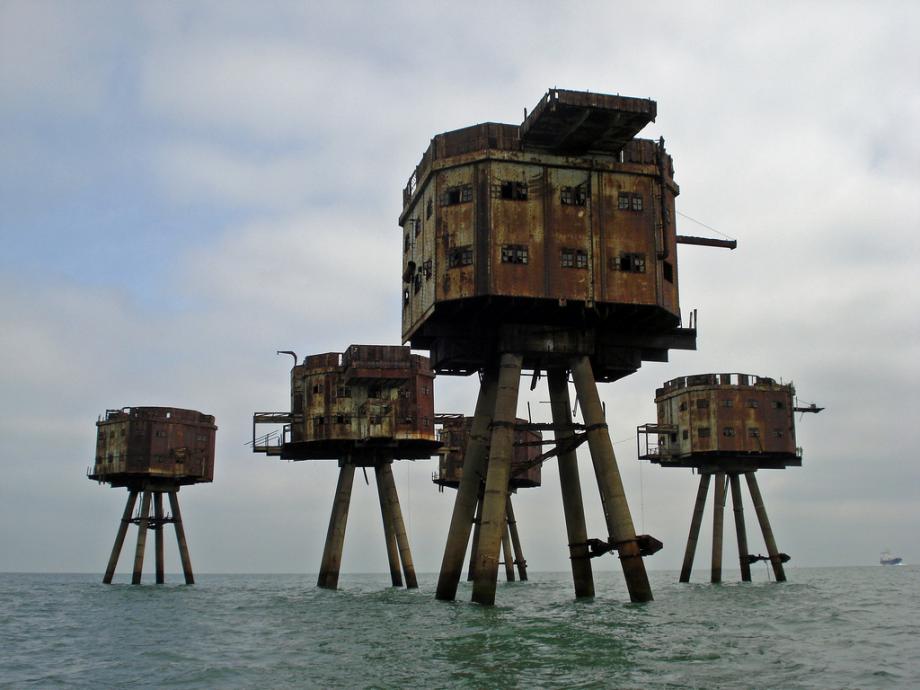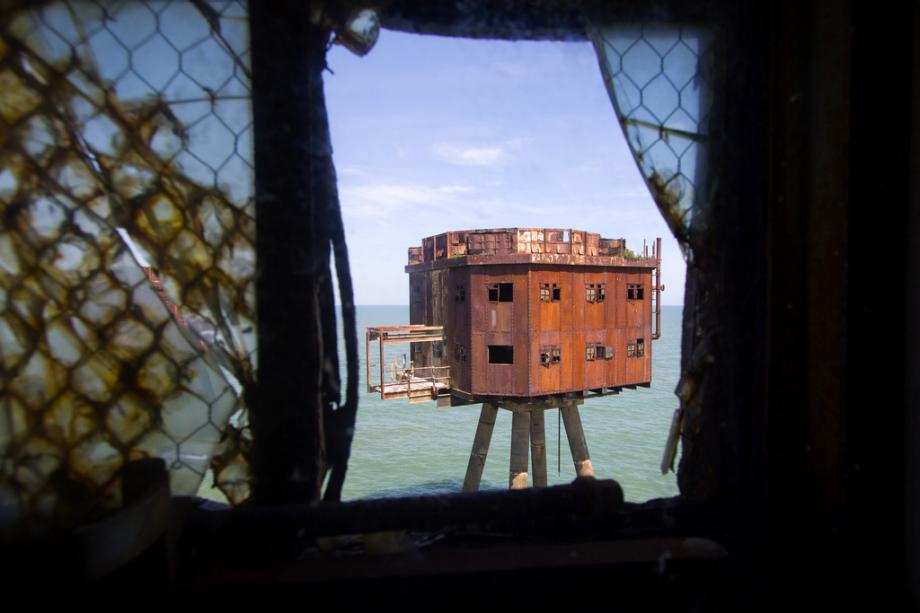WWII Sea Forts Taken Over by Pirate Radio
Atlas Obscura on Slate is a new travel blog. Like us on Facebook, Tumblr, or follow us on Twitter @atlasobscura.
Rising from the water like rusty invaders out of H.G. Wells, the Maunsell Army Forts in the Thames Estuary are decaying reminders of the darkest days of World War II.
Part of the Thames Estuary defense network, the anti-aircraft tower-forts were constructed in 1942, with each fort consisting of a cluster of seven stilted buildings surrounding a central command tower. When operational, catwalks connected the buildings. Built on land and then transported to their watery homes, the forts were designed by Guy Maunsell, a British civil engineer. Originally there were three of these forts, but only two are left standing: the Redsands Fort and the Shivering Sands Fort.
After their successful wartime career, the forts were decommissioned in the 1950s. In the 1960s and 70s, the remaining abandoned forts were famously taken over as a pirate radio station playing rock and roll. A ship collided with the towers destroying one of them, but the station regrouped and installed new equipment. In 1966 one of the people claiming ownership of the station was killed in scuffle with another, and the government responded with legislation shutting down off-shore radio stations.
More recently, Shivering Sands was occupied by the artist Stephen Turner for 36 days in 2005, roughly the same amount of time a WWII serviceman would have spent at the fort. He described the project as an experiment in isolation and wrote a blog and a book about his experience. In 2008 electronic artists The Prodigy filmed the end of their music video "Invaders Must Die" at Redsands.
All of the Army Forts are currently abandoned.
More photos of the Maunsell Army Sea Forts can be seen on Atlas Obscura
Abandoned remains of WWII:
- The rusting remains of the largest assembled WWII fleet remains anchored and abandoned off the coast of San Francisco
- The Flak Towers are giant WWII fortresses that fired 8,000 rounds a minute. They are now home to thousands of pigeons.
- The Buckner Building is a WWII-era military installation in Alaska that once held an entire city within its walls. Now its walls are falling down.
View Maunsell Army Sea Forts in a larger map



